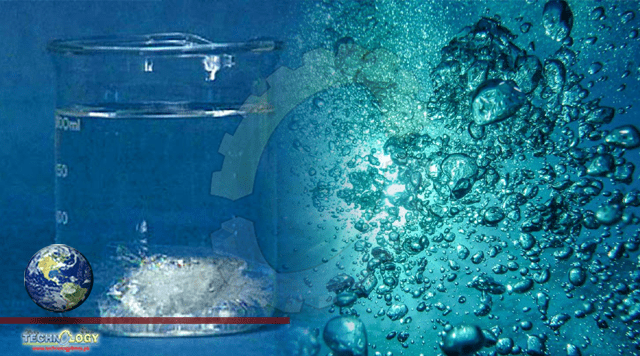Heavy water differs from ordinary water in that the hydrogen atoms formed by the proton and the electron it contains replace the stable isotope of hydrogen-deuterium. Deuterium also has a neutron in its nucleus.

Heavy water has a density that is 10 percent higher than that of ordinary water. Chemically, both types of water are practically the same, which would indicate that they have the same taste, i.e. neutral.
“Despite the fact that these two isotopes of water are chemically identical and although taste perception is based on chemical properties, we have clearly shown that humans, unlike mice, are able to distinguish their tastes. Heavy water tastes sweet to us.”
A scientist recently featured on an Academy of Sciences podcast Science at your fingertips He said the first scientific evidence of the sweet taste of heavy water appeared in the interwar period.
However, in the mid-1930s, a short article by the Nobel Prize winner in chemistry on the discovery of deuterium by Harold C. Urey was also published, claiming the two bodies of water were tasteless. And it was this edition that had a major impact on the discussion about the taste of heavy water for a long time.
The current team conducted experiments on humans and mice, as well as on genetically engineered cells that contain the human sweet taste receptor. According to Jungwirth’s earlier statement, this eliminated possible psychological aspects that can affect people even in blind experiments. The scientists then combined these methods with molecular modeling methods. They found that the taste of heavy water in humans is mediated by the sweet taste receptor.
“This proves that the perception of the sweet taste of heavy water has a weak but real effect that takes place directly at the level of the taste receptor and not somewhere further down the signaling pathway.
In fact, this means that we are using our language to create the quantum effects Being able to perceive differences, which is fascinating, “emphasized Jungwirth. According to him, this age-old scientific dispute over studies has come to an end.
The experiment started with curiosity
The scientist said that he and his colleagues first tried heavy water out of interest about five years ago. However, the standard experiment began later. “We met with a colleague in Israel who tests artificial sweeteners and has about twenty students. It took about two years,” the scientist said of the length of the research.
Heavy water is also used in medicine, for example – for metabolic measurements. According to representatives from the IOCB, knowing that it produces a sweet taste receptor response that is present on the tongue and other tissues of the human body can be useful information for clinicians and patients.
Further study should find the exact location and manner in which heavy water activates the taste receptor in humans so that it tastes sweet. Jungwirth noted that he would like to participate in this research as well.
“But we have now encountered such a wall there – we do not know exactly what the structure of the sweet taste receptor looks like. So we are waiting to see whether crystallographers or cryo-electron microscopy determine the structure. Then we could ask where exactly the effect is manifested, “described the scientist.
“And above all we know that receptors behave differently in heavy and light water. In heavy water, however, the salty or bitter taste receptor also behaves differently. And the question is why it is sweet, why it is not salty or bitter. We can’t answer that question today. I think we’d still like to move there, “concluded Jungwirth.
On behalf of the IOCB, Jungwirth worked on research with Phil Mason and the students Carmelo Tempre and Victor Cruces Chamorre. A group led by Masha Niv from the Hebrew University of Jerusalem and Maik Behrens from the Technical University of Munich also took part in the project.
Originally published at News beezer